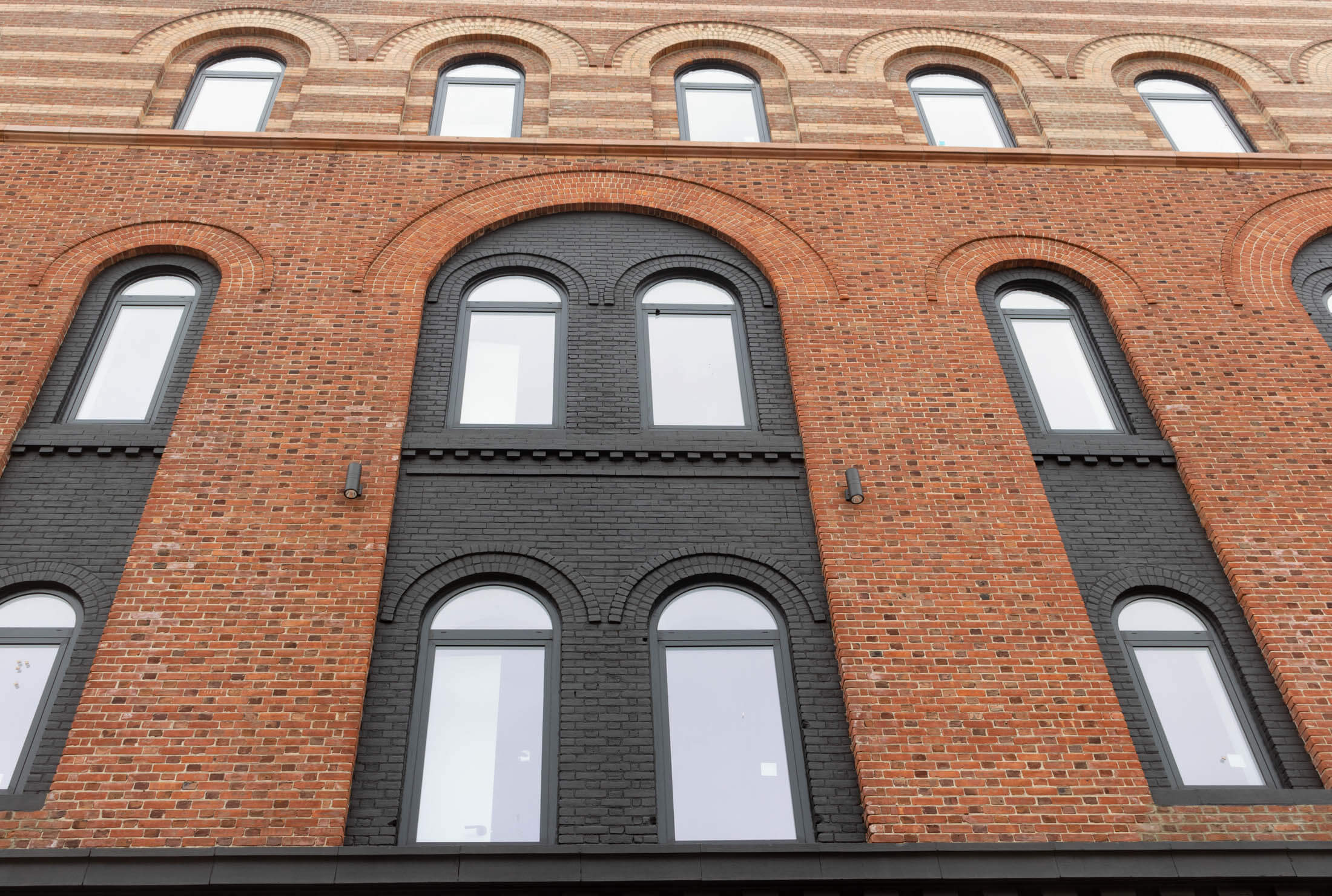Condos at Converted Francis Kimball’s Clinton Hill Gem Start Showing
[ad_1]
A challenge to change an obscure but domestically beloved and architecturally sizeable making into condos somewhat than raze it is nearing the complete line in Clinton Hill. Product sales for 10 Quincy started this week, and transfer-ins are predicted in the summer time, the developer explained to Brownstoner.
The brick facade has been cleaned and repointed, old window glass has been swapped out for new, and the first ground sports activities new windows and doorways. Irrespective of the new black paint strategically deployed throughout its facade, architect Francis Kimball’s 1899 warehouse for tony Brooklyn retailer Frederick Loeser & Business continues to be recognizable.
The authentic structure blended the American Romanesque Revival manufacturing unit model with the Venetian Gothic, a model that appeared normally in Kimball’s do the job. The building’s uncomplicated still placing decorative effects anticipated the two-dimensional ornament and brickwork that grew to become ubiquitous in the early 20th century. Kimball, one of New York City’s foremost 19th century architects, also designed the Emanuel Baptist Church in Clinton Hill, the Montauk Club in Park Slope, the Loeser keep in Downtown Brooklyn, and early skyscrapers in Manhattan.


“We had been conscious of what we were being getting into, and the focus was to mix in with the neighborhood — it is not as boxy, glassy, flashy as some of the more recent developments out there, although you will see we did not spare any bucks on finishes. We did the within to the nines but in a really tasteful way,” said Moishe Loketch of the Loketch Team, who together with his father, Pinny Loketch, and associates Allan Lebovits of Meral Home Team and Joel Wertzberger of the Joyland Team, is a single of the developers of the job.
Within, the main of the building was taken off to make a courtyard and bring mild and air into the interior. As a result, the flats have far more personal outdoor place than is ordinarily the situation in loft conversions, mentioned Corcoran agent Deborah Rieders, who is dealing with gross sales for the enhancement. The flats are also sharply priced for the neighborhood, with 44 of the building’s 46 models asking below $2 million. Rates range from $899,000 to $2.4 million, which include two-bedrooms for $1.395 million and 3-bedrooms setting up at $1.95 million.
The setting up, a Salvation Military retail store for a long time, is not landmarked. Staying more than Significantly might have aided conserve it. The developers had been capable to transfer some air legal rights to the new rental constructing upcoming doorway at 26 Quincy, which opened very last yr and incorporates inexpensive housing. (It replaced a small wing and addition to the main warehouse.)


“We experienced all started off talking about this home just before they acquired it,” mentioned Rieders, referring to the developers. “And I claimed there is authentic desire in this community for historic properties, they are few and significantly between. if they took the constructing down we would have lost the grandeur of the ceilings and the unbelievable facade this setting up has. To consider it down and build some thing new would not be in holding with character of the community. It’s such an legendary creating in the neighborhood, I consider the neighbors would be upset if it disappeared.”
Conscious of the industrial roots of the creating, the developers went with darker kitchens and further vast flooring, reported Rieders. Ceiling heights array from 11 to 14 ft. The units are “not normal cookie cutter” and have “lots of nooks and crannies,” many thanks to the quirks of the authentic developing, she additional.

The building in 2018
The initially floor units in the rear have non-public gardens, and some of the 2nd ground apartments have private terraces. The shared backyard on the roof has Manhattan sights, seating and personal cabanas, which will be sold individually. There is underground parking for rent for $350 a month, unfold throughout equally properties.
“Below $2 million dollar contracts are what is moving in the industry, and we’re thrilled to bring a bunch of new ones to industry,” explained Loketch. “The assets was developed by Covid, we didn’t halt.” Prior to starting up revenue, they previously experienced a several delivers from locals next the development, and contracts have currently long gone out, he reported.




[Exterior photos by Susan De Vries | Interior images via Corcoran]
Linked Tales
E mail [email protected] with further more responses, inquiries or strategies. Comply with Brownstoner on Twitter and Instagram, and like us on Facebook.
[ad_2]
Source hyperlink







